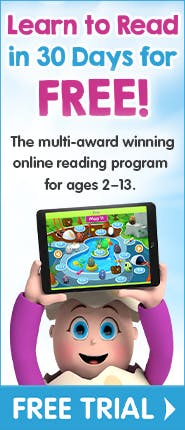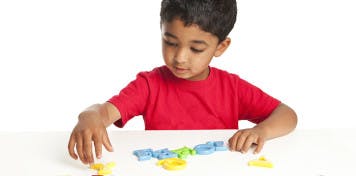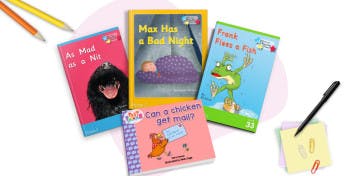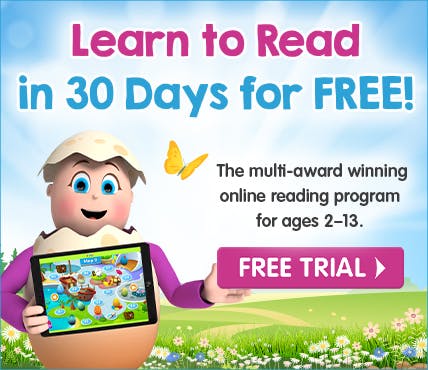


Helping Your Child Learn to Read – Guide for Ages 4–5

Learning to read simple words and sentences can help your child get excited about starting ‘big school’. An early grasp of basic reading skills can give preschoolers the confidence boost they need to feel ready to approach this important new milestone.
There is a huge body of research that supports getting an early start in reading before school.
Learning to read is one of the most important factors of academic school and contributes significantly to success in early literacy.
So how much is your child expected to know before starting school?
Around the ages of four and five, your child is likely to start developing some basic reading skills, such as phonemic awareness, and may even know some sight words.
At this stage, your child may also know how to spell their name and recognize the letters of the alphabet.
This is an important time to lay the foundations for your child’s reading success.
Here are some fun, engaging and age-appropriate ways you can help your child learn the reading skills they'll need before they start school. For younger children, read our guide on helping your child learn to read for ages 3–4.
Learn to read guide for ages 4–5
1. Regular reading and storytelling
Read together at least once a day and encourage your child to retell stories.
Reading regularly with your child continues to be one of the most important things you can do to build essential literacy skills.
Make an effort to emphasize new vocabulary words and use them in everyday conversation.
It’s also a good idea to encourage your child to retell stories you have read by drawing pictures, using puppets or even role-playing.
A good rule of thumb is that by the time they start school, they should be able to listen to and understand five to ten minute stories and retell simple stories they’ve heard.
Learn more about the benefits of reading to your child.
2. Letter recognition and the alphabet

At the ages of four and five, most children will learn to name the letters in the alphabet. Some children will learn to spell and write the letters in their name.
Start by exploring letters and sounds with alphabet games.
You can use alphabet charts at home that include uppercase and lowercase versions of each letter, or play online reading games that focus on letter recognition and progress at your child’s pace.
When you read together, ask your child to find certain words and letters.
For example, “Can you find Sam’s name on the page?”, “Can you find the word ‘and’ in this sentence?” or “How many words can you find on the page that starts with the letter p?”
3. Have your child read to you
Pick out some simple phonics-based books ('decodable readers') and listen to your child read.
Make sure to check that he or she is sounding out letters and words correctly, rather than guessing at them.
Remember to be patient and praise effort. It’s important not to push your child too much and provide a lot of positive reinforcement; overemphasizing mistakes can be extremely discouraging for young learners.
The most important goal at this stage is to help them see reading as a positive experience.
Access 350 online decodable readers FREE for 30 days
The Reading Eggs Library contains 350 online decodable phonics books your child can read for free with a 30-day trial. The Library has over 4,000 fiction and nonfiction ebooks in total that can be filtered by reading level and topics of interest. Start your free trial today!
4. Choosing the right books
Let your child choose the books they want to read.
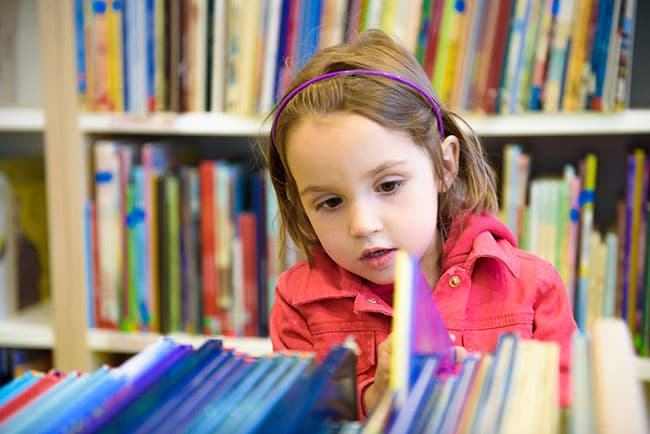
Now is a great time to take your child to visit the local library and let them enjoy the process of picking out their own books.
Try to avoid interfering too much in the selection process – the main goal is to give them a sense of ownership and enjoyment over what they read.
Talk about the books they choose, ask them to point out the title, and see if they can recognize words in the blurb. Let them become familiar with the components of a book.
Learn more about choosing the the right books for your child's reading ability.
5. Build phonological awareness
Remember that building phonological awareness is key.
Developing phonological awareness – the awareness of the sound structure of words – will be hugely beneficial when your four- or five-year-old starts school.
If you haven’t started building your child’s phonics skills and phonemic awareness, you can start now by doing fun activities like exploring rhyming words and clapping syllables.
Playing phonics games is a great way to help your child build phonological awareness.
6. Make time for reading practice
Allocate ‘quiet reading time’ at home.
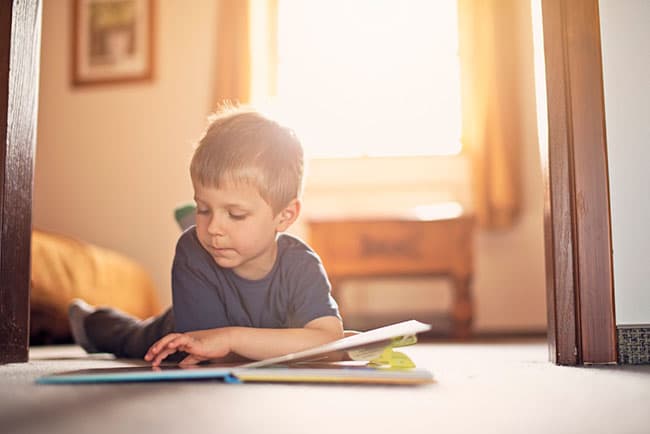
Even if your child isn’t ready to read independently, allow them time to sit with books, explore the illustrations, practise holding books the right way up, and flipping the pages from left to right.
A good idea is to read alongside your child during ‘quiet reading time’, whether it’s a novel, a magazine or the news.
It’s never too early to show them that reading is an enjoyable and leisurely activity – you are your child’s best role model!
Help your child learn to read before starting school
Reading Eggs is the multi-award winning online reading program for ages 2–13 that makes learning to read fun for kids. Designed by educational experts, the program is full of motivating reading lessons, engaging games, delightful characters and 4,000 ebooks. Regular reports will keep you informed about your child's progress. Start your free 30-day trial today!
7. Learn the high-frequency words
Learning to identify and read sight words is essential for young children to become fluent readers.
Most children will be able to recognize a few sight words at the age of four (e.g. is, it, my, me, no, see, and we) and around 20 sight words by the end of their first year of school.
Knowing the first 100 high-frequency sight words will give your child around half of the words they need for reading.
These can be reinforced by making flashcards, playing sight word games and using an online reading program, such as Reading Eggs.
Reading Eggs is the fun and interactive online reading program that covers phonics, letter recognition, sight words and more for kids aged 2–13. Try it FREE for 30 days.
